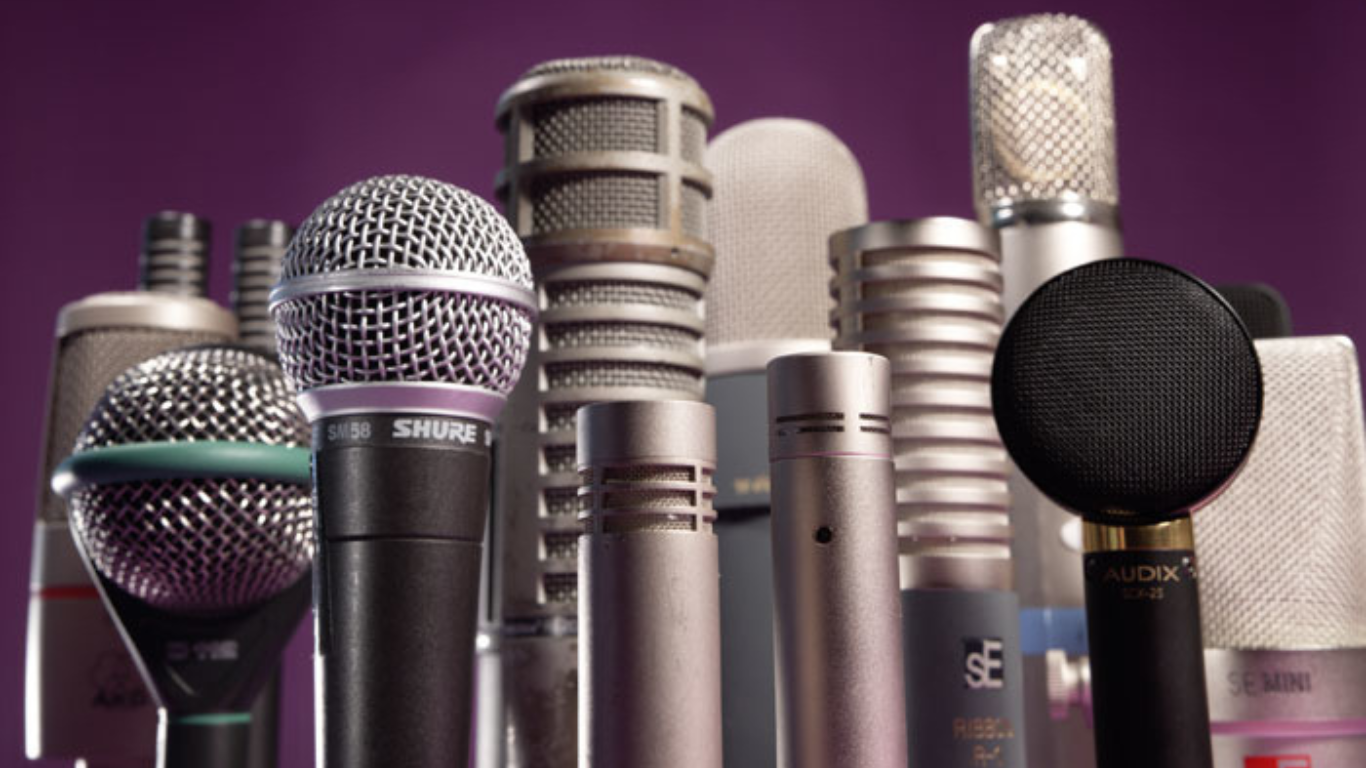How to choose the perfect microphone for all your needs

A microphone or a mic/ mike is used on many occasions like in telephones, PA systems, for making motion picture production, in audio engineering, in sound recording and also in radio and television broadcasting. It is the most essential and commonly used audio equipment that is very versatile.
Microphones are of many types, they can be dynamic which utilize a coil of wire suspended in a magnetic field. Condenser microphones utilize a vibrating diaphragm as a capacitor plate; and the contact microphone, which uses a crystal of piezoelectric material. However, for an amateur it's hard to understand how this technical jargon and how it influences the working of a microphone.
If you are someone who is looking forward to buying a mic for personal or professional use , making the right choice can be difficult because of the many technical facets associated with them. Every microphone is designed with great precision, keeping in mind its specific application and usage.
The microphone needs of a person involved in music production is different from someone who is using it for podcasts or live performances. It's necessary to be crystal clear about the choice of microphone you want to buy to leverage maximum utility.
A good microphone must directly capture your intended audio source without picking up any other nearby sound. But with so many good options available, basic mic knowledge can take you a long way. So to make things easier for you we have come up with all the necessary information about microphones that you need to be accustomed with.
Inception
Microphones were developed after people felt the need to amplify the human voice. Its main aim was to ensure that a single person's voice could reach a large crowd of people. Acoustic megaphones were the earliest devices that could achieve this.

History
In fifth century BC Greece, theater masks with horn-shaped mouth openings were used to acoustically amplify the voice of actors in amphitheaters. Later, in 1876 Alexander Graham Bell patented the first microphone. His microphone consisted of a wire which conducted electrical direct current (DC). Here transmission was possible from both directions and audio signals were generated and received by a moving armature transmitter and its receiver.

Evolution
The first microphone that enabled proper voice telephony was the carbon microphone. The carbon microphone was a direct prototype of today's microphones and was critical for its development. Later in 1916, E.C. Wente of Western Electric developed the next breakthrough with the first condenser microphone. Eventually by 1923, the ribbon microphone was introduced which was developed by Harry F. Olson, who essentially reverse-engineered a ribbon speaker.

Microphones for Production
While producing music as a professional, the quality of sound is paramount. Different mics are used for recording different instruments. Strings may best be replicated with ribbon or dynamic mics, while condensers may work nicely for overheads on drums or guitars.

Microphones for Podcasting
A podcasting microphone is crucial for connecting with your audience through a professional sound. Choosing between a dynamic and condenser microphone can be a dilemma sometimes. The four most important factors to look out for here are cardioid pickup patterns to reduce noise, pop filters to prevent popping Ps, a shock mount that can filter out low-frequency vibrations and the ability to customize the sound of the mic.

Microphones for Live Performances
Microphones are equally responsible for influencing and controlling the energy of live performances along with the instruments being played. A typical setup for a live performance must include at least two dynamic microphones, a basic kit of drum mics and at least one pair of condensers which are fairly robust and resistant to transients.

Dynamic vs condenser microphone

The vast majority of microphones are either dynamic or condenser mics. The main difference between dynamic and condenser mics is that dynamics convert sound to audio via electromagnetic induction while condensers do so via electrostatic principles. This leads to differences in design and overall sound. Condensers are active, while dynamics are usually passive.
TRC Recommended Microphones:
➡ Under 11K:



➡ 11K TO 25k:

2. AKG P220


➡ Over 25K:

2. AKG C414

3. AKG C414

If you're a Music Producer, Singer/Songwriter, Rapper, Beatboxer, DJ, Podcaster, Streamer or any other creator - Sign up for Creators Club and get all production gear provided to you at cost.. forever!
Read more: Everything You Need To Know About Audio Interfaces






Comments